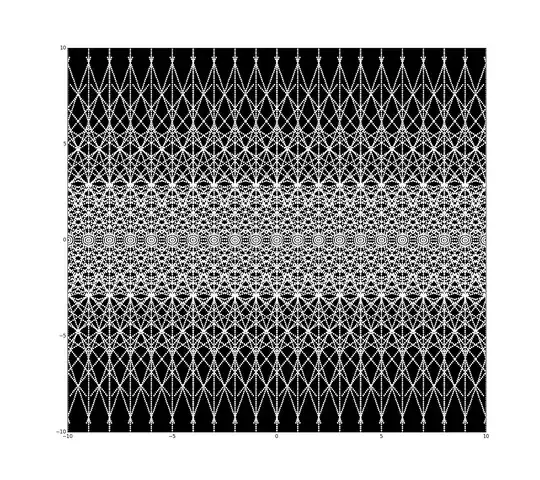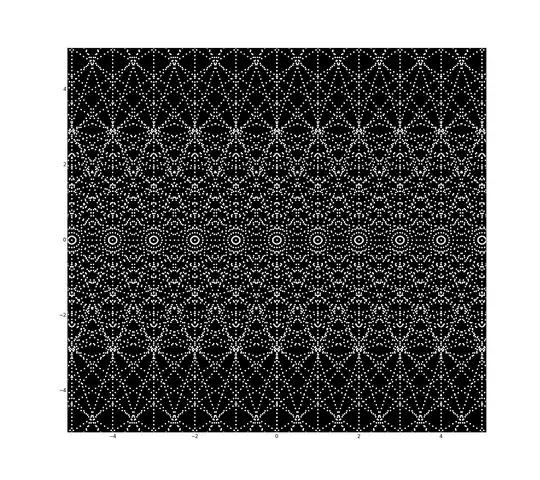I was reading this nice question about a demonstration of Euler's identity, and tried to visualize how would look the left part of the identity in the complex plane by using the following function:
- Def. $f(k_1,k_2,k_3)=k_1e^{ik_2\pi}+k_3 \in \Bbb Z \land k_i \in [-n,n] \ n \in \Bbb R$
It is a tryout of a generic version of the left side of Euler's identity $e^{i\pi}+1 = 0$. If I did correctly the calculations $e^{ib}=cos(b)+sin(b)i$, thus:
- $f(k_1,k_2,k_3)=k_1e^{ik_2\pi}+k3=((k_1cos(\pi k_2))+k_3)+(k_1sin(\pi k_2))i \in \Bbb Z$
For instance, to be able to see the patterns, taking $k_1,k_2,k_3 \in [-10,10]$ stepping in the interval by $0.1$, and calculating all the possible combinations of triplets $(k_1,k_2,k_3)$ and their values $f(k_1,k_2,k_3)$, this is the pattern that it generates when the complex values $a+bi$ are represented in Cartesian coordinates $(a=x,b=y)$:
A closer approach to $0+0i$:
Euler's identity $f(1,1,1) = e^{i\pi}+1 = 0+0i$ would be located at the center and the rest of points are the closer values of the more generic function $f(k_1,k_2,k_3)$ as it was defined above for the example. As expected is periodic and symmetrical. This is a little animation:
I would like to ask the following questions:
Is the conversion in step (2) correct or should be modified? Did I make some step wrong?
Could this visual approach provide another point of view or insights about Euler's identity?
Thank you!


